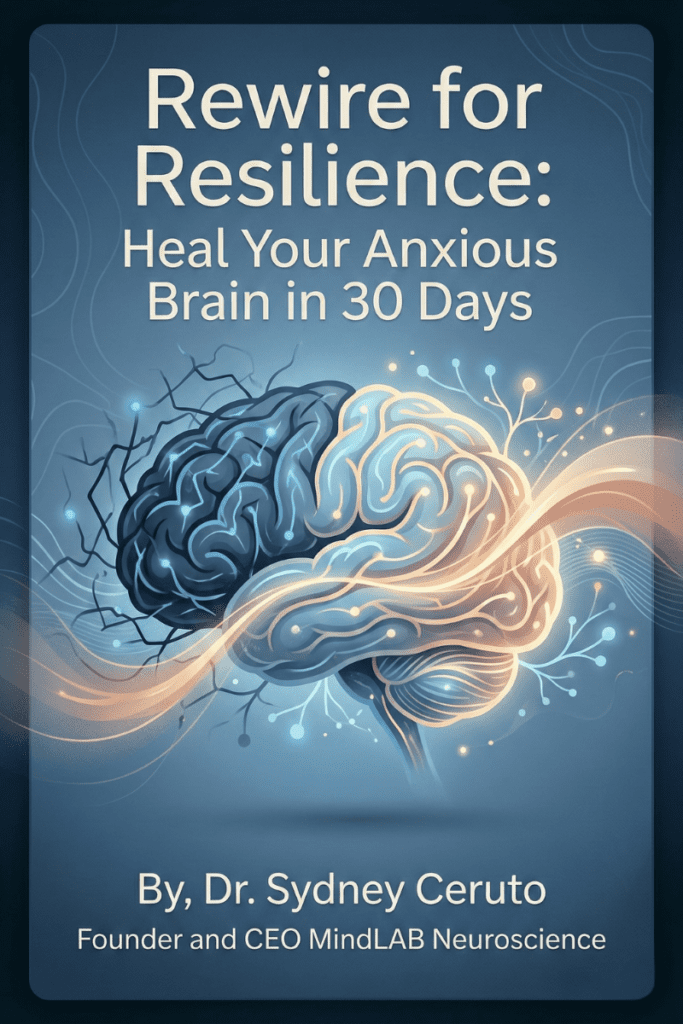In the realm of career decisions, the intricate dance of neurons and synapses plays a pivotal role. Each choice we make, from the first steps of our professional journey to pivotal career pivots, is deeply intertwined with the neuroscientific principles governing our brains. At the heart of this process lies the concept of neuroplasticity – the brain’s remarkable ability to rewire and adapt in response to new experiences and challenges. This neuroplasticity is the cornerstone upon which we build and reshape our professional paths.
Understanding the neuroscience behind career decisions can be transformative. As we navigate through various career stages, our brains continuously evolve, influenced by every decision and experience. This constant evolution is guided by neural pathways that are shaped and reshaped, akin to pathways in a dense forest that become more defined with each journey. Embracing this neural flexibility allows us to approach career decisions with a mindset attuned to growth and adaptability.
Embarking on the seven revolutionary steps to navigate your career path with neuroscience, we delve into a journey of self-discovery and cognitive enhancement. These steps are designed to harness the power of neuroplasticity, guiding us to make informed, strategic career decisions that align with our evolving neural landscape. As we explore these steps, we unlock the potential to rewire our brains for success, resilience, and fulfillment in our professional lives.
Step 1: Understanding Career Decisions Through Neuroscience
The journey into career decisions begins within the intricate networks of our brains. Neuroscience reveals that when we face a career decision, several areas of the brain work in concert. The prefrontal cortex, responsible for planning and decision-making, plays a crucial role in evaluating options and foreseeing future outcomes. Simultaneously, the limbic system, including the amygdala, processes emotional responses, influencing our feelings toward certain career paths.

Moreover, our brain’s neuroplasticity allows us to adapt and reshape our preferences and abilities over time. This adaptability is crucial in career development, especially when transitioning between different roles or facing new challenges. As we encounter various experiences in our professional journey, our neural pathways rewire, facilitating the acquisition of new skills and adaptation to new environments.
This understanding of how our brain functions in making career decisions is vital. It not only explains our natural inclinations and resistances but also opens avenues for intentional brain training and development. By leveraging this knowledge, we can make career choices that are not only intellectually sound but also emotionally fulfilling, aligning with our brain’s natural tendencies and growth potential.
Step 2: Brain Mechanics in Making Career Choices
In making career decisions, our brain’s executive functions, primarily located in the prefrontal cortex, play a pivotal role. This region is responsible for critical thinking, future planning, and evaluating consequences. When contemplating career decisions, this area weighs the potential long-term benefits and risks, helping us forecast the outcomes of our choices. Concurrently, the limbic system, particularly the amygdala, influences our emotional responses to these choices, often dictating our immediate feelings toward certain careers or job opportunities.
Neurotransmitters like dopamine also significantly impact career decisions. Dopamine, often associated with reward and pleasure, gets activated when we anticipate positive outcomes from a career choice. This neurochemical response can motivate us towards careers that we find rewarding or align with our passions. However, it’s crucial to balance this emotional pull with rational analysis from the prefrontal cortex to make well-rounded career decisions.
Therefore, understanding these neural mechanisms is essential in making informed career decisions. By recognizing how our brain’s reward system and executive functions interact, we can better navigate the complex landscape of career choices, leading to more fulfilling and strategically sound decisions.
Step 3: Navigating Career Inflection Points with Neural Guidance

Career inflection points are critical junctures where significant decisions can lead to drastic changes in one’s professional trajectory. Neuroscience provides insights into how we navigate these moments. When faced with career inflection points, the brain’s stress response system, particularly the hypothalamic-pituitary-adrenal (HPA) axis, is activated. This can affect our decision-making process, sometimes leading to hasty or overly cautious decisions.
However, by understanding and managing this neural stress response, we can make more balanced and thoughtful career decisions. Techniques such as cognitive reframing can help in mitigating stress responses, enabling us to view career inflection points as opportunities rather than obstacles. This step will delve into strategies for harnessing our brain’s natural responses to stress, aiding in making pivotal career decisions with clarity and confidence.
Step 4: The Science Behind Career Decision-Making Processes
In understanding career decisions, it’s crucial to explore the cognitive biases that often influence our choices. For instance, confirmation bias leads us to favor information that aligns with our existing beliefs, potentially skewing our career choices. Similarly, the overconfidence bias might cause us to overestimate our abilities or prospects in a new role.
The role of memory, particularly episodic memory stored in the hippocampus, is also significant. It allows us to recall and learn from our past experiences, aiding in making informed career decisions. Additionally, our capacity for cognitive empathy, facilitated by mirror neurons, helps us understand and anticipate the needs and reactions of others in the workplace, which can be a decisive factor in career progression and satisfaction.
By understanding these cognitive processes and biases, we can develop strategies to mitigate their impact, leading to more rational and fulfilling career decisions. This step provides insights into recognizing and overcoming these biases, enhancing the effectiveness of our career decision-making.
After exploring the cognitive biases that influence our career decisions, it might be beneficial to look at structured decision-making processes. For a practical approach to career decision-making, Yale University offers a five-step career decision-making process. This framework complements the neuroscientific insights we’ve discussed by providing actionable steps to apply these insights in real-world career planning.
Step 5: Making the Right Choice: Insights from Brain Research
In making the right career decisions, it’s important to understand the balance between emotion and logic. The amygdala, an emotional center in the brain, often triggers intuitive responses to career options, while the prefrontal cortex is responsible for logical reasoning and analysis. Research suggests that the most effective decisions are made when there is harmony between these two brain regions.
For example, when considering a career change, an emotional response might create an initial attraction or aversion to the idea. However, the prefrontal cortex steps in to evaluate this choice logically, considering factors like long-term career goals, financial stability, and personal growth opportunities. By recognizing and understanding these emotional and rational responses, individuals can make career decisions that are not only driven by immediate feelings but are also well-thought-out and sustainable in the long run.
This step highlights strategies to balance intuition with analytical thinking. Techniques such as reflective journaling can help in recognizing and articulating emotional reactions, while structured decision-making models like SWOT analysis (assessing strengths, weaknesses, opportunities, and threats) can provide a more objective view of career choices. By combining these approaches, individuals can make career decisions that are both emotionally fulfilling and logically sound.
Step 6: Leveraging Neurotransmitters for Informed Career Moves

Understanding the role of neurotransmitters like dopamine and serotonin is crucial in career decision-making. Dopamine, often linked with pleasure and reward, is released when we engage in activities we find enjoyable or anticipate positive outcomes from a career decision. This release can significantly enhance motivation and drive toward a particular career path.
On the other hand, serotonin affects mood and social behavior, playing a key role in how we perceive our workplace environment and interact with colleagues. Low serotonin levels can lead to feelings of dissatisfaction and disconnection, impacting career decisions and workplace relationships.
By engaging in activities that naturally boost these neurotransmitters, such as taking on challenging tasks or building positive social connections at work, we can positively influence our career decisions. For instance, seeking out new learning opportunities or roles that align with personal interests can increase dopamine release, enhancing job satisfaction and motivation. Similarly, fostering a supportive network and positive interactions in the workplace can elevate serotonin levels, contributing to a more fulfilling professional life.
In this way, a deeper understanding of neurotransmitters can provide valuable insights into making career choices that are not only intellectually sound but also emotionally rewarding.
Step 7: Applying Neuroscientific Insights for Career Advancement
The final step in making informed career decisions involves applying neuroscientific insights to foster continual growth and advancement in one’s professional journey. This includes understanding how ongoing learning and skill development can enhance neural plasticity, and the brain’s ability to rewire and adapt. By engaging in new experiences and challenges, individuals can stimulate their brains to form new connections, leading to improved cognitive abilities and adaptability in their careers.
This step also looks at the importance of mental well-being in career success. Managing stress through techniques like structured relaxation or engaging in activities that promote mental health can positively impact cognitive function and decision-making abilities. Additionally, understanding the neurobiology of motivation and resilience can help individuals persist in their goals, even in the face of obstacles or setbacks.
Incorporating these neuroscientific principles into career planning and development not only aids in making more informed decisions but also supports long-term career satisfaction and success. By continuously applying these insights, individuals can navigate their careers with a deeper understanding of how their brain functions and adapts, leading to more fulfilling professional experiences.
Conclusion
In conclusion, leveraging neuroscience in the realm of career decisions not only enlightens our understanding but also enhances our ability to navigate professional landscapes. This approach offers a profound edge in making more informed and fulfilling career choices.
For individuals eager to explore this innovative approach, my career coaching services are designed to provide personalized guidance and strategies. I integrate neuroscientific insights into my coaching methodology, offering a unique perspective on career development. Whether you’re seeking to redefine your career path or optimize your current trajectory, my customizable career coaching program can help you unlock your professional potential and achieve your goals with clarity and confidence.
For further insight, read: Feeling Stuck in Your Career? Breakthrough Strategies in Neuroscience
#careerdecisions #neuroscientificapproach #brainfunction #decisionmaking #cognitiveprocesses #neuroplasticity #neurotransmitters #executivefunctions #emotionalintelligence #careerplanning #careerchange #brainresearch #cognitivebiases #neuralpathways #prefrontalcortex #limbicsystem #careerdevelopment #careercoaching #neuroscienceinsights #professionalgrowth





